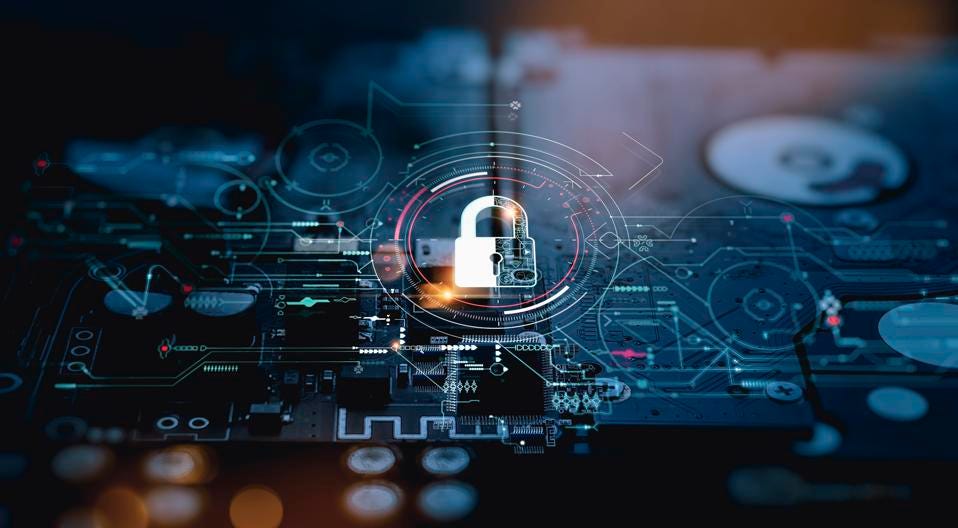
In this Article we’ll discuss that, How to Benefits and Limitations of AI’s Impact on Cybersecurity In 2023? Artificial Intelligence (AI) has revolutionized the cybersecurity landscape. With the ever-growing complexity of cyber threats, AI has become an essential tool for detecting and mitigating cyber risks. In 2023, AI’s impact on cybersecurity is expected to continue to grow, providing better protection to individuals, organizations, and governments. However, as with any technology, AI also has limitations that we need to consider.
Benefits of AI’s Impact on Cybersecurity in 2023

Faster threat detection and response: AI-powered cybersecurity systems can analyze large amounts of data in real-time and detect threats faster than traditional methods. AI can quickly identify patterns and anomalies in network traffic, user behavior, and system logs, making it easier to identify potential threats and respond to them before they cause damage.
As AI-powered cybersecurity solutions become more prevalent, it is essential to keep in mind that cybercriminals will also start using AI to create more sophisticated and targeted attacks. Organizations will need to stay one step ahead of cybercriminals and continuously update their defenses. This requires ongoing investment in research and development to ensure that AI-powered solutions remain effective against emerging threats.
Moreover, it is crucial to address the ethical concerns raised by the use of AI in cybersecurity. This includes concerns around the use of personal data, privacy issues, and potential biases in the system. Organizations need to ensure that they are transparent about their use of AI and are implementing solutions that are fair, unbiased, and respect individuals’ privacy.
Finally, it is worth noting that AI-powered cybersecurity solutions should not replace human intervention entirely. Although AI can automate many tasks and improve efficiency, it cannot replace the critical thinking and decision-making skills of humans. Organizations should ensure that there is a human element to oversee and adjust the system as needed, providing an additional layer of security.
Improved Accuracy:
AI-powered cybersecurity solutions can improve accuracy in several ways. One of the most significant advantages of AI is that it can analyze vast amounts of data quickly and accurately, which can be challenging for humans to achieve. This allows AI-powered solutions to identify potential threats more efficiently, reducing the risk of false negatives and false positives.
AI-powered solutions can also analyze patterns and behaviors, which can help identify unusual activity that could indicate an attack. Machine learning algorithms can identify patterns and behaviors that may be missed by traditional rule-based systems, making them more effective at detecting complex and evolving threats.
Another way that AI improves accuracy is through automation. By automating routine tasks such as updating security patches and performing vulnerability scans, AI can reduce the risk of human error, which can lead to security breaches.
Furthermore, AI can use predictive analytics to identify potential future threats and take proactive measures to prevent them. This can help organizations stay one step ahead of cybercriminals and minimize the impact of security breaches.
Cost-Effective:
One of the most significant benefits of using AI in cybersecurity is cost-effectiveness. Traditional cybersecurity solutions can be expensive to implement and maintain, and they often require a significant amount of resources and personnel to manage. In contrast, AI-powered solutions can automate many tasks and reduce the need for human intervention, making them more cost-effective.
AI-powered cybersecurity solutions can also help organizations save money by reducing the risk of data breaches and cyber attacks. Data breaches can be costly, resulting in reputational damage, legal fees, and lost business opportunities. AI-powered solutions can detect and respond to threats quickly, minimizing the risk of data breaches and associated costs.
Additionally, AI can help organizations optimize their cybersecurity spending by identifying areas of weakness and providing recommendations for improvement. By analyzing data from various sources, AI-powered solutions can identify patterns and anomalies that could indicate potential vulnerabilities, allowing organizations to focus their resources on areas that need the most attention.
Another way that AI can improve cost-effectiveness is by enabling organizations to scale their cybersecurity capabilities without having to hire additional staff. As organizations grow and expand, they need to ensure that their cybersecurity measures keep pace. AI-powered solutions can automate many tasks and allow organizations to handle more data and more complex threats without the need for additional staff.
Read More: 6 Unique Ways to Earn Quick Cash In 2023:
Reduces False Positives:
One of the primary benefits of AI-powered cybersecurity solutions is the ability to reduce false positives. False positives occur when a system flags an activity or behavior as suspicious or malicious when, in fact, it is legitimate. This can lead to wasted resources as security teams investigate and respond to false alarms.
AI can reduce false positives by using machine learning algorithms to analyze large volumes of data and identify patterns and anomalies that may indicate a security threat. These algorithms can learn from past incidents and continuously improve their accuracy, reducing the number of false positives over time.
One way that AI can reduce false positives is through the use of behavioral analysis. Behavioral analysis looks at patterns of activity over time to identify suspicious behavior that may be indicative of a cyberattack. AI-powered solutions can analyze vast amounts of data in real-time, allowing them to quickly detect and respond to potential threats.
Another way that AI can reduce false positives is through the use of anomaly detection. Anomaly detection uses machine learning algorithms to identify patterns that deviate from normal behavior. This can help to identify potential threats that may be missed by traditional rule-based systems.
Additionally, AI can reduce false positives by improving the accuracy of threat detection. AI-powered solutions can analyze data from multiple sources and use machine learning algorithms to identify patterns and trends that may indicate a security threat. This can help security teams to identify and respond to potential threats quickly and accurately.
Better Protection Against Insider Threats:
Insider threats are one of the most significant cybersecurity risks for organizations. AI can monitor user behavior and identify anomalies that could indicate an insider threat, providing better protection against internal threats.
Enhances Vulnerability Management:
AI can scan and analyze code to identify vulnerabilities in software and applications. This makes it easier for organizations to identify and fix vulnerabilities before they can be exploited by cybercriminals.
Provides Proactive Defense:
Traditional cybersecurity solutions are reactive, responding to threats after they have occurred. AI can provide proactive defense, identifying potential threats and taking action to prevent them from causing damage.
Limitations of AI’s Impact on Cybersecurity in 2023

Lack of transparency and complexity
One of the main limitations of AI in cybersecurity is its lack of transparency and complexity. AI algorithms can be very complex and difficult to understand, making it challenging to identify how they work and why they make certain decisions. This lack of transparency makes it difficult to trust the system and can result in false positives or false negatives. Furthermore, the complexity of AI algorithms can make it challenging to maintain and update the system, requiring specialized skills and expertise.
Adversarial attacks
AI-powered cybersecurity solutions are also vulnerable to adversarial attacks. Adversarial attacks involve modifying inputs to the AI algorithm to deceive the system into making incorrect decisions. For example, an attacker could modify a malware sample to evade detection by an AI-powered antivirus system. Adversarial attacks can be challenging to detect and can cause significant damage to the system and its users.
Bias in the system
Another limitation of AI in cybersecurity is the potential for bias in the system. AI algorithms are only as good as the data they are trained on. If the data used to train the system is biased, the AI algorithm will also be biased. This can lead to discriminatory or unfair decisions, such as flagging certain individuals or groups as potential threats based on their race or ethnicity.
Lack of context
AI-powered cybersecurity solutions can also struggle to understand the context of a situation. For example, an AI-powered system may flag a legitimate user as a potential threat if they access sensitive data from a new location. While this behavior may seem suspicious, it could also be due to legitimate reasons, such as a user traveling for work. The lack of context can result in false positives and false negatives and can be challenging to address.
Dependence on data quality and quantity
AI-powered cybersecurity solutions are highly dependent on the quality and quantity of data they are trained on. If the data is incomplete or inaccurate, the AI algorithm will also be incomplete or inaccurate. Additionally, AI algorithms require a vast amount of data to be effective, which can be challenging to obtain for smaller organizations or in specific industries.
Lack of human intervention
While AI-powered cybersecurity solutions can automate many tasks and improve efficiency, they cannot replace the critical thinking and decision-making skills of humans. Organizations should ensure that there is a human element to oversee and adjust the system as needed, providing an additional layer of security. Dependence solely on AI-powered solutions can leave the system vulnerable to new and emerging threats that require human intervention.
Conclusion
AI’s impact on cybersecurity in 2023 offers significant benefits, such as faster threat detection and response, improved accuracy, and cost-effectiveness. However, organizations need to be aware of the limitations of AI, such as lack of transparency and complexity, and take steps to mitigate these limitations to ensure that AI-powered solutions are effective and safe. By implementing a multi-layered defense system, prioritizing employee training, establishing ethical guidelines, and continually monitoring and updating the system, organizations can maximize the benefits of AI while minimizing the risks.











